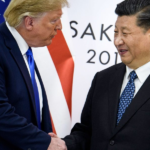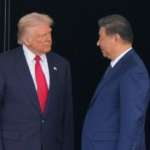The CPI report released this week will be a double-edged sword for the FOMC.
On the other hand, the report gives Trump ammunition to call for a cut to interest rates.
Indeed when the CPI report was shared, the president wasted no time on doubling down on his stance that the FOMC should be loosening monetary policy in the U.S.
Taking to Truth Social, the social media platform he owns, Trump wrote: “No inflation, and prices of Gasoline, Energy, Groceries, and practically everything else, are DOWN!!! THE FED must lower the RATE, like Europe and China have done.”
For context, the president’s post isn’t entirely accurate. The CPI report didn’t confirm there was no inflation—that would have been a reading of zero—and in fact reported an inflation increase of 0.2% compared to a month prior, bringing the 12-month average to 2.3%.
The president is correct in saying that the prices of gas and groceries dropped in April, down 0.1% each, though energy and energy service prices increased 0.7% and 1.5% apiece.
Many other commodities such as clothing, used cars and trucks, and food away from home posted negative inflation readings, while the likes of shelter, medical care services and transportation services increased in price fractionally.
The FOMC may still resist cutting at its next meeting in June for a range of reasons.
Firstly, there is still a great deal of volatility and uncertainty in the economic outlook. In the face of such conditions, Powell has said the Fed will sit tight and wait for more data before deciding on a path forward.
Secondly—and a factor contributing to the uncertainty in markets—is the White House’s tariff policy.
After all, the full effect of President Trump’s tariff policy has not yet been felt (this inflation data is for April when tariffs were announced and then paused) and the ultimate extent of tariff action is still unknown. The Oval Office’s evolving rhetoric on tariffs might leave policymakers questioing how many more twists trade negotiations may present—few would have predicted an 145% hike on Chinese imports in a matter of weeks.
As Bank of America’s U.S. economists wrote yesterday: “The benign April CPI print doesn’t really move the needle for the Fed. The impact from tariffs was not expected to show up in the inflation data until May or June.
“With inflation already above target, the only reason to cut in the near term would be if the labor market were to deteriorate materially. We believe we are still some ways from the stage where the Fed can cut on soft inflation alone.”
To some extent, Powell can’t win in defending the federally-mandated independence of the Fed. If he cuts, analysts may fear he’s done so because of political pressure and if he doesn’t, could be accused of refusing to do so to prove the Fed’s autonomy.









